Sendai, Japan – After marathon meetings and negotiations at the 3rd United Nations World Conference on Disaster Risk Reduction (DRR), the HFA 2.0 or Hyogo Framework of Action for 2015-2030 was released on March 18, 2015. This is the revised document from the initial HFA that proposed DRR methods on a global scale, originally drafted in 2005.
The 5-day conference, held once every decade, was attended by world leaders from multi-sectors such as governments, non-government organizations, media, women’s groups, people with disabilities, private sectors, children and youth.
The HFA 2.0 addresses 4 priorities:
Priority 1: Understanding disaster risk
Priority 2: Strengthening disaster risk governance to manage disaster risk
Priority 3: Investing in disaster risk reduction for resilience
Priority 4: Enhancing disaster preparedness for effective response, and to “Build Back Better” in recovery, rehabilitation and reconstruction
The HFA has 7 global targets :
1. a substantial reduction in global disaster mortality
2. a substantial reduction in numbers of affected people
3. a reduction in economic losses in relation to global GDP
4. substantial reduction in disaster damage to critical infrastructure and disruption of basic services, including health and education facilities
5. an increase in the number of countries with national and local disaster risk reduction strategies by 2020
6. enhanced international cooperation
7. increased access to multi-hazard early warning systems and disaster risk information and assessments.
Building Resilience
This framework comes four years after the Great East Asia Earthquake in Japan. As one of the hardest hit areas of the tragedy that claimed 20,000 lives, the city of Sendai has shown the world their resilience through recovery efforts. Proof of this is their successful hosting of the conference with over 10,000 attendees.
However, in areas where the tsunami occurred, it would still take years for their complete rehabilitation. With soil drenched by salt water from the sea, agriculture in these areas was not possible at the moment.
Current recovery efforts included building better roads, elevating them by three meters as protection against tsunami.
Affected communities were relocated by their original clusters, which allowed residents to still live in close proximity with neighbors after transferring to safer areas.
Philippine contingents contribute to HFA
With the Philippines being of one the most disaster-prone countries, Filipino representatives at the conference significantly contributed to the drafting of the HFA 2.0.
Their input comprised of the following:
Inclusion of the elderly in policy making. Aside from the fact that the elderly have had years of experience on disasters, their participation will also allow the framework to develop DRR methods that consider their welfare.
Inclusion of the indigenous people. With traditional knowledge built by years of living in close contact with nature, the indigenous sector is a valuable contributor to the development of climate adaptation and disaster resiliency.
Highlighting the role of migrants. Migrants will also assist communities and societies in the structural design and implementation of DRR efforts.
Utilizing the sectors of the academe, science and research. These entities shall be focusing on disaster risk factors and scenarios, as well as emerging hazard risks in medium and long-term periods, in both regional and national levels—a wealth of information that can aid policy-makers.
Linkage with business, professional associations and private sectors. Doing so will be able to sustain DRR efforts. These sectors shall be integrating DRR in their business models to promote resiliency and continuous sustainable development of communities.
The Department of Science and Technology (DOST) also shared their multi-hazard tool called Project NOAH (Nationwide Operational Assessment of Hazards), which highlights maps that identify areas prone to floods and storm surges. Dr. Mahar Lagmay introduced WebSafe, a newly developed tool that provides visualization of the possible extent of a disaster and its impact to the people.
A national framework on Comprehensive School Safety, which incorporated disaster management in the school curriculum, was discussed by Education Assistant Secretary Laguda. The framework includes activities related to the arts, music and play, which students can share with family members.
Climate Change Commissioner Lucille Sering explained the importance of the Eco-town framework being done in the Philippines. This is a local implementation mechanism of the National Climate Change Action Plan (NCCAP) that gives direction to sustainable economic growth from 2011 to 2028. Through Eco-town, municipalities in areas most vulnerable to climate risks are given methods on mitigation and prevention.
Social Welfare and Development Secretary Dinky Soliman, who led the Philippine delegation, said in an exclusive interview with Panahon TV, “Napakahalaga ng conference na ito dahil nangyayari lamang ito every ten years. Yung mapagkakayarian, magiging batayan ng kilos, pagtulong at pakikipagtrabaho para babaan ang risko,” (This conference is really important because it only happens every ten years. And what will be agreed on this will be our new guidelines in implementing the revised framework for reducing risks.)
Children and Youth
As the HFA 2.0 paved the way on how countries could unite in addressing DRR, the children and youth sector also actively participated in the conference through the Children and Youth Forum, where they presented practical and innovative solutions for DRR.
Conference Highlights
During the conference, Cyclone Pam with category-5 strength, devastated the Pacific Island nation, Vanuatu. President Baldwin Lonsdale appealed to the international community for support.
With over a hundred forums in the famed “City of Trees,” the conference also included the private sector, whose resources and expertise were considered crucial to DRR.
Meteorological organizations, headed by the World Meteorological Organization, presented global figures on weather and climate, as well as new policies and technologies. Meanwhile, various sectors also introduced new applications of technologies in the fields of communication, automotive, construction, and health in exhibitions and at the BOSAI Fair.
With reports from Donna Lina-Flavier and George Gamayo
Photos by Garrie David
From tropical depression category, “Betty” has weakened into a low pressure area (LPA) and was last spotted at 885 kilometers east of Casiguran, Aurora at 4 AM today. PAGASA Weather Forecaster Meno Mendoza clarifies the LPA still has no effect on any part of the country. Today, the whole country can expect generally fair weather with chances of isolated rain showers or thunderstorms, mostly in the afternoon or evening.
Moderate to strong winds will prevail over the eastern section of Luzon. Fishing boats and other small seacraft are alerted against moderate to rough sea conditions brought by the nearby weather disturbance.
Meanwhile, PAGASA Weather Forecaster Gener Quitlong said the LPA will start to bring rains tomorrow over the eastern section of Luzon. It is also expected to affect the central and southern portions of Luzon. All are advised to monitor updates and further changes.
On the other hand, despite the presence of “Betty” within the PAR, the country experienced a warm weather yesterday. Here are the highest temperatures recorded on March 18, 2015.
The ridge of a high pressure area has been the dominant weather system during the past few days. According to PAGASA, the northeast monsoon or amihan has not been terminated. In fact, it is expected to re-surge tomorrow, bringing slightly colder weather.
Special Non-Working Holiday
Today marks the celebration of “Sulyog Festival” in Bongabong, Oriental Mindoro. It is a religious festival which includes dances and cultural shows that honor to St.Joseph.
Meanwhile, the people of Canlaon, Negros Oriental will also celebrate the “Pasayaw Festival”. Derived from the combined word of “Pasalamat Pinaagi sa Sayaw” or thanksgiving through dance, it reflects the joy and praise to God through the intercession of St.Joseph.
In line with the mentioned festivals, the palace has declared March 19, 2015 as special non-working holiday both for Bongabong, Oriental Mindoro and Canlaon, Negros Oriental. This aims to give full opportunity to the people to participate in the festivities.
Every March, Women’s Month is celebrated worldwide. This observance is rooted in the different activities of women in the early 20th century, where women’s rights and other social concerns were raised. These include low wages, lack of protection and the unjust working conditions of women workers during that time.
Looking back at the time before the mid-19th Century, education for women was limited as they were taught to mostly focus in religion, singing, dancing and other skills and knowledge that would prepare them in their traditional roles of being wives and mothers.
Back then, teaching was the only acceptable occupation for women. There was a wide gender gap in most professions, especially the male-dominated fields of science, including meteorology.
According to the National Oceanic and Atmospheric Administration (NOAA), more women officially began entering the world of weather forecasting in 1942 because men were needed in the war. When Pearl Harbor was bombed, only two women were working in the observation and forecast staff of the Weather Bureau in the United States.
In 1942, the Weather Bureau issued the following announcement:
OPPORTUNITY FOR WOMEN IN METEOROLOGICAL WORK
“Although there has been much prejudice against and few precedents for employing women generally for professional work in meteorology, perhaps a dozen women have obtained meteorological positions in the last few years, mostly outside the government service. However, since there is at present an acute shortage of both trained meteorologists and men for observers and clerical positions in the Weather Bureau and other government agencies, airlines, etc., women with the proper qualifications (same as for men) are now being welcomed in many places where they were not encouraged even last year. (In England women have already taken over many meteorological posts, we hear.) Therefore, women with training or experience in meteorology or its branches should apply immediately for any of the current or forthcoming U.S. Civil Service examinations in meteorology which are open to them… This will be an opportunity to join the vanguard of the many women who will very likely find careers in meteorology in the not too distant future and at the same time it will be a patriotic choice in case the war should require many women to replace or supplement men as meteorologists.”
Over 900 women became part of the Weather Bureau, mostly in clerical positions or as junior observers. Many of them worked as temporary employees but were changed to permanent status later on.
Here are some of the women in history who excelled in conventionally male disciplines like science and mathematics, leading them to leave their mark in the field of meteorology:
Sarah Frances Whiting (1847-1927, American)
Whiting did not have the chance to obtain formal education but her father, Joel Whiting, tutored her in mathematics and physics. As the first woman to join the New England Meteorological Society, she assembled a meteorological station where she imparted her knowledge by teaching. Her students gathered data for the U.S.Weather Bureau.
She was also known for establishing the first physics laboratory for women and the astronomical observatory in Wellesly. Whiting set up the second undergraduate physics laboratory, and was able to produce the first X-ray photographs in the United States.
Famous for using the spectroscope, a wiring diagram for an apparatus utilized in generating electric sparks, Whiting also wrote several astronomical articles and was able to publish a book entitled “Daytime and Evening Exercises in Astronomy.”
Eleanor Anne Ormerod (1828-1901, English)
Provided by her mother with a general education, Ormerod learned to speak and write in various languages including English, French, Latin, Italian, Spanish, Dutch and Norwegian. She was known for her illustrations that complemented her published works.
Ormerod was awarded by the Royal Horticultural Society for her study of insects, determing which were beneficial for gardeners and which were pests.
She became interested in meteorology when she moved to Torquay with his brother, George Wareing Ormerod, who took meteorological observations and became a Fellow of the Royal Meteorological Society in 1874. Because of him, Ormerod’s curiosity about the weather and its relationship to insects grew.
Ormerod later on became the first woman Fellow of the Royal Meteorological Society. She built her own meteorological station at Isleworth, published manuscripts and assembled decades of observations from other weather stations.
Caterina Scarpellini (1808-1873, Italian)
Scarpellini was the founder of the Meteorological Ozonometric Station in Rome. As a meteorologist in Rome, she preserved records of the weather and ozone conditions, and was able to publish different manuscripts about ozone and coastal squalls.
Eleanor Stabler Brooks (1892-1986, American)
Wife of a founder of the American Meteorological Society, Charles S. Brooks, Eleanor Brooks was also a known meteorologist herself. She worked at the Blue Hill Observatory and became an indexer for the Bulletin of the American Meteorological Society for ten years.
The Brooks couple helped each other in producing a daily weather article for newspapers entitled “Why the Weather?” and was later on published as a book.
Joanne Simpson (1923-2010, American)
Because of her fascination with clouds as she sailed in her small catboat, Simpson became interested in the weather. After her Master’s Degree, she moved on to a Ph.D. program. That time she was told by a faculty member that no woman ever got a Ph.D.in meteorology and if anyone did, she would still end up unemployed.
Instead of losing hope, Simpson completed a course under Herbert Riehl, known as the “father of tropical meteorology”. She focused on tropical cumulous clouds and with her strong perseverance, was able to make Riehl her Ph.D. advisor.
She filmed clouds on long flights and drew maps of cloud formations. Simpson was the first meteorologist to reveal patterns that are now shown by satellites that helped describe the role of clouds in global atmospheric circulation. Simpson pursued her studies and observations, leading her to become the first woman to hold a Ph.D.in meteorology.
Mentioned above are just some of the women who excelled in the history of meteorology. This only proves that women have contributed a remarkable impact in the field of science. What we have today and how we track the atmosphere are fruits of their exceptional ideas, ideas that will come a long way and will lead to future innovations.
Sources:
http://passporttoknowledge.com/storm/who/bios/women1.htm
http://earthobservatory.nasa.gov/Features/Simpson/simpson2.php
http://www.history.noaa.gov/stories_tales/women6.html
https://books.google.com.ph/books?id=nFt6csjzc48C&pg=PA462&lpg=PA462&dq=Sarah+Frances+Whiting+meteorology&source=bl&ots=GyEPnoaBK6&sig=eBpKk3U2SXiFzKkZ6lH3Lp3caJw&hl=en&sa=X&ei=SZn-VMC-MtH48QW8s4GwAw&ved=0CEwQ6AEwDA#v=onepage&q=Sarah%20Frances%20Whiting%20meteorology&f=false
In Sendai, Japan where nation leaders and representatives gathered for the 3rd United Nations World Conference on Disaster Risk Reduction (DRR), Philippine Climate Change Commissioner Lucille Sering shared the climate change law in our country, stating that weather changes and climate extremes that include heat, heavy precipitation, droughts and storm surges, make more Filipinos vulnerable to risk exposure. “In 2020, dry season will become drier and wet season will become wetter,” Sering explained.
According to the Stern Review recommendations, countries must allocate at least 2% of its GDP to implement climate action. But in Sering’s report, only 0.3% was allocated in the Philippines, not enough to address climate-related needs. However, she said that government willingness for appropriations was relatively increasing.
Sering also emphasized the role of Land Use Planning in DRR and Climate Change Adaptation (CCA), which covers prohibiting development in certain areas, classifying areas affected by climate change, regulating zoning plans with legally binding status, and hazard modification.
“There is a strong synergy, we see that in the country,” Sering enthused as she shared the country’s experiences on catastrophic events that shook the Philippines in recent years.
Meanwhile, Social Welfare and Development Secretary Corazon “Dinky” Soliman chaired the discussion on Preparedness for Disaster Response. This highlighted effective national and local DRR lifelines in five states, covering timely coordination, capacity building and cross-boarder response. Feedback from participants included contingency plans for education during calamities and disaster prevention, and prioritizing pilot projects in the most vulnerable communities.
During the session’s closing, Soliman stated that there must be consideration for the indigenous people, persons with disability, senior citizens, children in all the DRR initiatives. “There are many experiences of disasters around the globe, but there are many pockets of hope that attest to the power of human resiliency. Our discussions today served to reinforce this value so that even the least powerful can be strong even when disasters strike,” Soliman said.
The Philippine Youth Contingents
More than 250 comprised the world youth delegation in the conference. Fifteen from these are Filipinos—ten self-funded and five sponsored delegates.
One of the self-funded delegates is Quin Cruz who flew all the way from Pasig City. “Nakikita ko na palagi nating ginagamit ‘yung youth doon sa relief operation, yung volunteerism nila sa pagbibigay ng relief goods, pero marami pa pala pwedeng pasukan ang youth patungkol sa emergency response, recovery at preparedness. Marami pa palang aspeto na puwede nating pag-aralan kung puwede tayong magkaroon ng knowledge management, ng innovation, ng education para magamit yung underutilized power ng youth na maging part ng tutulong sa Disaster Risk Reduction.” (I noticed the youth usually gets involved during relief operations. But there are a lot of opportunities for us to help in emergency response, recovery and preparedness. There are many aspects that we can get involved in to widen our knowledge on management and innovation, and to utilize the youth’s capacity to help in Disaster Risk Reduction initiatives.)
All public forums are open for the youth contingents. As part of their closing ceremony yesterday, a special working session was dedicated to them entitled “Children and Youth: Don’t decide on my future without me.” This forum highlighted the youth’s rights and importance in DRR activities.
Sendai, Japan – Multi-sectoral groups continued to review the various inputs for the updated Hyogo Framework of Action, a framework document proposing Disaster Risk Reduction techniques for many countries, at the 3rd United Nations World Conference on Disaster Risk Reduction (DRR).
Today, the outputs of the framework will be presented at the closing ceremony of the conference.
Global Broadcasters participate in DRR
Given their crucial role in delivering timely information to billions of people, four broadcasting unions pledged to push for greater involvement in DRR. These include the African Union of Broadcasting, the Arab States Broadcasting Union, the Asia-Pacific Broadcasting Union and the European Broadcasting Union.
“We want to raise awareness,” said Giacome Mazzone, Head of Institutional Relations of the European Broadcasting Union. “It’s about the link between policy decisions and actions on the ground.”
“In order to fulfil the media’s immense potential as an information disseminator and powerful behaviour changer, the media would like to be accepted, not as a mere messenger, but a partner in developing and implementing DRR policies at regional, national and local levels, and also help dismantling the silos in which most stakeholders work at the moment,” they said.
Besides trying to create a “common language” between institutions, experts and the media, they believe that it is also important to promote “disaster literacy” among the public.
Earlier this week, Broadcasters held a parallelel meeting at the Global News Forum.
Children and youth
At the Children and Youth Presentation, representatives shared their recommendations on how they can participate in DRR activities. This includes implementing programs that are creative and engaging through the arts, music and play. They also had a parallel conference discussing inputs to be included in the second version of the Hyogo Framework of Action.
Sendai, Japan – In the ongoing 3rd United Nations World Conference on Disaster Risk Reduction in Sendai, the 79 Philippine contingents, led by Senator Loren Legarda and Social Welfare and Development Secretary Dinky Soliman, have been meeting regularly to evaluate their presentations and to monitor feedback on local Disaster Risk Reduction (DRR) campaigns.
Last night, several points were raised to strengthen and promote DRR initiatives in the country:
Mainstreaming project-based DRR campaigns. To address the lack of sustainability development and disaster preparedness initiatives in the Philippines, stronger partnerships with the private sectors would have to be formed.
Media to promote actionable information. Media, being the fourth state, should not only amplify news and warnings during disasters. Part of their mission is to promote awareness on environmental issues and to simplify scientific terminology for the public.
Proactive families equal proactive communities. Disaster awareness begins at home. Families should be encouraged to involve themselves in community DRR initiatives carried out by the local government units.
Students to echo DRR curriculum at home. Though children are most vulnerable to disasters, they are also influential and effective communicators. As part of integrating DRR into education, lessons learned in school must also be transmitted at home.
Hope Shines in the Land of the Rising Sun
By George Vincent Gamayo | March 17, 2015
Sendai, the capital of Miyagi Prefecture and the largest city in the Tohoku Region, is also known as the “City of Forest” and “Academic Town” because of its generous cover of trees and universities that contribute to its high technology industry.
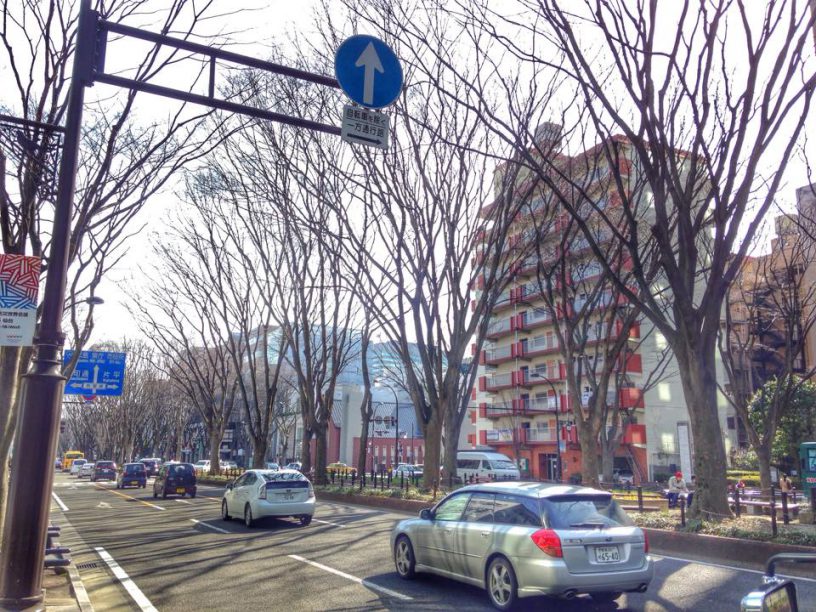
In spite of its population of approximately one million, no traffic jam is seen in any part of the city. Bikers’ lanes are well utilized here.
With an average temperature of 12 degrees Celsius and annual precipitation of 1,241 millimeters, Sendai enjoys a temperate climate compared to other cities in Japan. Its hottest month is in August with a mean temperature of 24 degrees Celsius, while the coldest is in January with an average of 1.5 degrees Celsius.
However, the capital’s idyllic rhythm was disrupted by the Great East Japan Quake and Tsunami that struck its coastal communities four years ago.
Noriko Kikuchi used to live in Yuriage in Natori City, one of the worst-hit areas of the tsunami. Before the tragedy, it was a lively fishery port with 7,000 residents. And as we walked through the wrecked community, Noriko unveiled her stories.
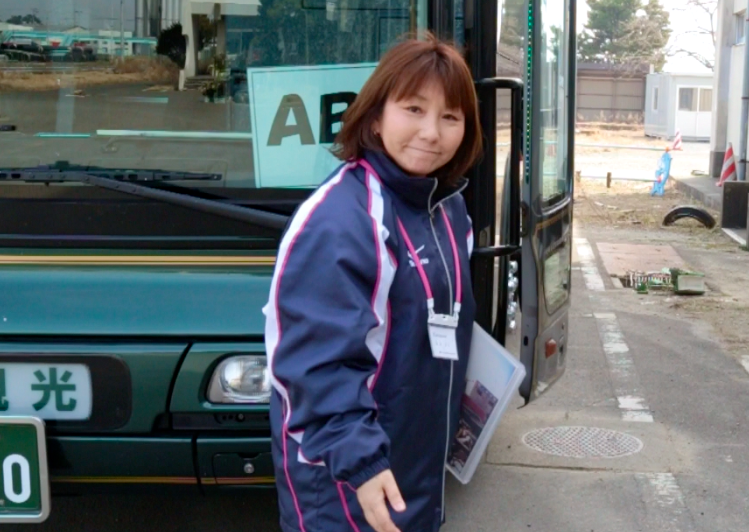
Noriko, 35, is just one of the nearly 230,000 people displaced after the tsunami. For survivors like her, the 2011 earthquake was the longest six minutes of their lives.
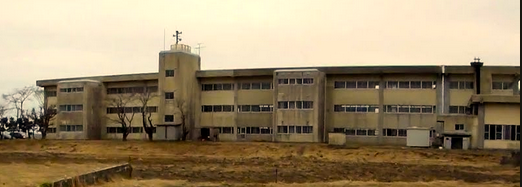
The Yuriage Elementary School used to hum with activity, with students calling it their second home. But after the quake, all that was left was an empty, damaged school filled with deafening silence. According to Noriko, one student died in the building.
 The clock stopped at the exact time of the quake.
The clock stopped at the exact time of the quake.
Meanwhile, a huge clock greeted visitors at the abandoned Yuriage Junior High School. The timepiece stopped exactly at the time when the earthquake struck. On that day, the school’s tsunami-warning device failed to function, causing the death of 14 students.
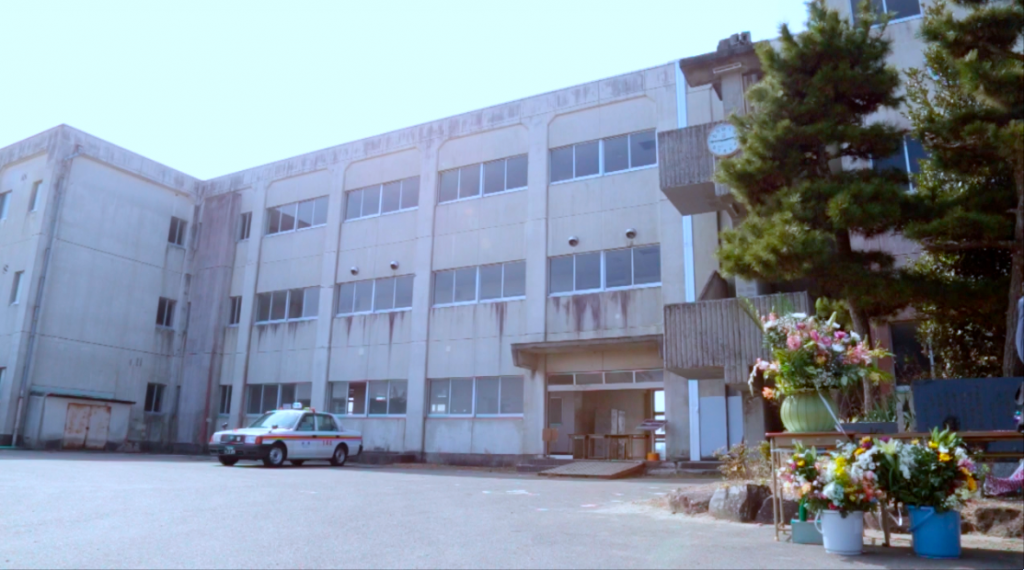 Flowers offered at the façade of the campus during the fourth anniversary of the tsunami incident
Flowers offered at the façade of the campus during the fourth anniversary of the tsunami incident
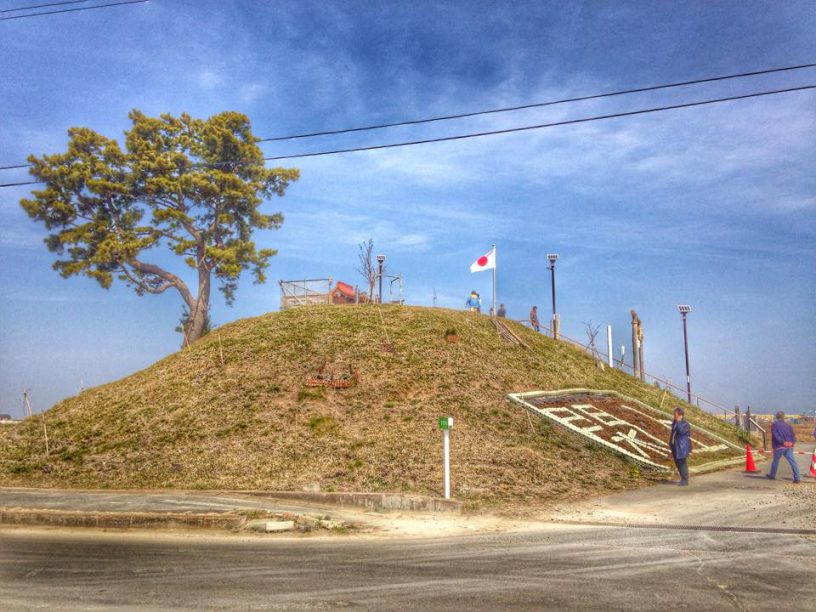 The hill that was once a slice of paradise in the town of Yuriage stood witness to the two fateful days in Sendai’s history.
The hill that was once a slice of paradise in the town of Yuriage stood witness to the two fateful days in Sendai’s history.
Hiroyama is a 6-meter artificial mountain built in 1829. Upon seeing the gigantic ocean waves rushing inland during the catastrophic event in 2011, residents climbed the hill. Still, not one of them survived. The tsunami was 8.2-meters tall—high enough to swallow the highest ground in the town. “200 people were killed in this coastal area,” Noriko explained.
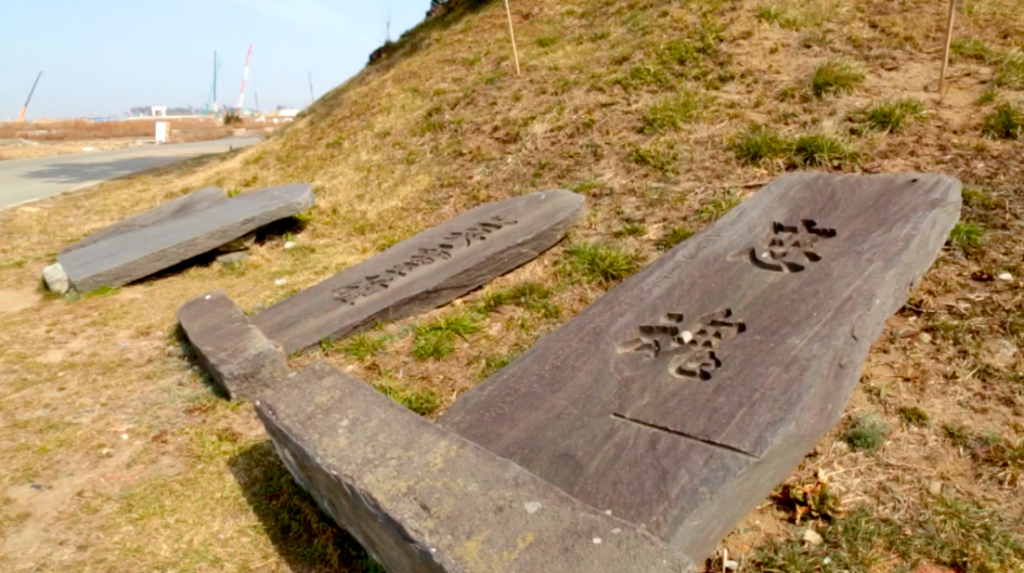 “Beware of Tsunami,” says these memorial stones put up after the March 1, 1933 tsunami that assaulted the same coast. These were once placed on top of Hiroyama, but were swept down the hill after the Great East Japan Quake and Tsunami in 2011.
“Beware of Tsunami,” says these memorial stones put up after the March 1, 1933 tsunami that assaulted the same coast. These were once placed on top of Hiroyama, but were swept down the hill after the Great East Japan Quake and Tsunami in 2011.
No less than 500 casualties in Yuriage were reported with 38 still missing. A few of them were tourists. As an effect of the tragedy, the city sunk to 87 centimeters, making it more vulnerable to sea level rise and storm surges.
A few members of the older generations are having difficulties to adapt to their temporary communities, making them leave and go back to their old homes. Meanwhile, some young people are still not fully recovered from the trauma, not wanting to live in the place where they almost lost their lives.
Sustainability Starts in Sendai
The Great East Japan Tragedy was just one of the devastating natural calamities experienced in recent years. To address disaster-related issues, the United Nations gathered 40,000 leaders and disaster experts from 186 countries to revise the Hyogo Framework for Action (HFA) to be adopted from 2015 to 2025. Through these plans for disaster mitigation, resiliency and climate adaptation, the most vulnerable countries will be given due assistance as they strive to prevent economic loss and casualties during tragedies. The conference was held from March 14 to 18, 2015 in Sendai.
The Philippines sent 78 official delegates, headed by Social Welfare and Development (DSWD) Secretary Mirasol “Dinky” Soliman. The team successfully pushed the inclusion of women, youth, senior citizens, indigenous people and migrants in disaster initiatives.
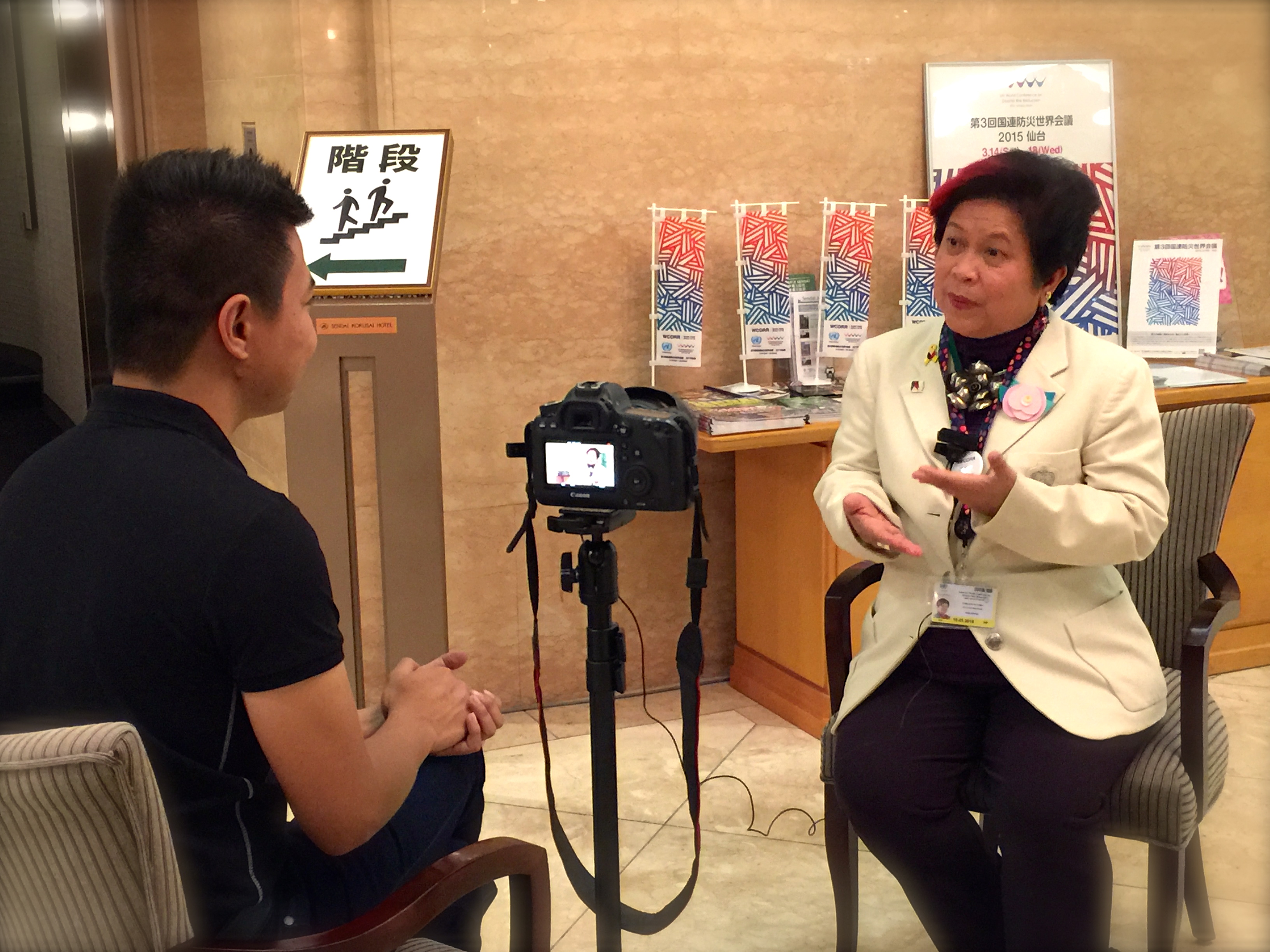 Panahon TV interviews DSWD Sec. Soliman during the Third UN World Conference on Disaster Risk Reduction in Sendai which only happens once every ten years.
Panahon TV interviews DSWD Sec. Soliman during the Third UN World Conference on Disaster Risk Reduction in Sendai which only happens once every ten years.
At the end of the conference, four priorities were agreed for the Sendai Framework for disaster risk reduction:
1: Understanding disaster risks2: Strengthening disaster risk governance to manage disaster risks
3: Investing in disaster risk reduction for resilience
4: Enhancing disaster preparedness for effective response, and to “Build Back Better” in recovery, rehabilitation and reconstruction
No Exceptions
With the third longest coastline in the world, enduring almost 20 cyclones per year and located in the Pacific Ring of Fire, the Philippines is one of the countries most vulnerable to climate change. On November 2013, Super Typhoon Haiyan, locally known as Yolanda, battered the country and claimed more than 6,000 lives. According to the weather bureau PAGASA, mightier typhoons with erratic tracks can happen in spite of the El Niño phenomenon this 2015.
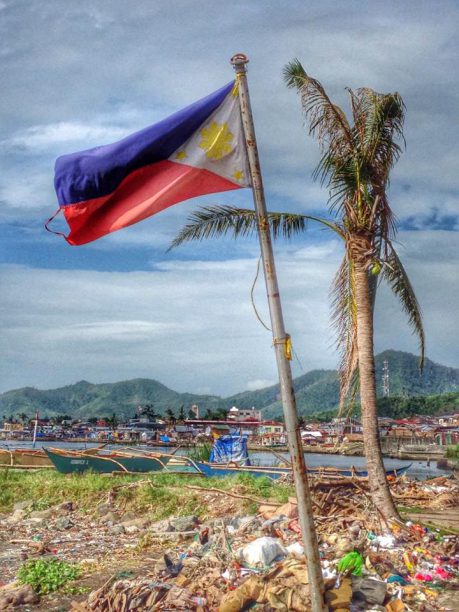
“The Filipino spirit is waterproof.”
But Filipinos have more to worry about. Experts are not dismissing the possibility of a 7.2 magnitude earthquake in the Greater Metro Manila Area (GMMA) due to the movement of the Valley Fault System, whose last reported tectonic incident was in 1658. Such scenario will put over 34,000 lives at risk. Likewise, the Manila Trench can generate a magnitude 8.2 quake that can trigger tsunamis in Manila and nearby areas such as Western Bataan, Zambales, Occidental Mindoro, Cavite and Batangas. It may sound like an apocalypse; but it is a possibility that must not be ignored. A killer quake or a stronger cyclone may or may not come in this lifetime. But that should not stop Filipinos for preparing for such an event.
How to prepare for possible hazards in the country.
The Sun Rises in Sendai
“No one is immune to disasters; they happen in every corner of the world,” International journalist Mari Ramos said during the Global News Forum in Sendai.
It is the utmost duty of media practitioners to disseminate accurate and simplified warnings with actionable information. Citizens must also participate to help improve community preparedness.
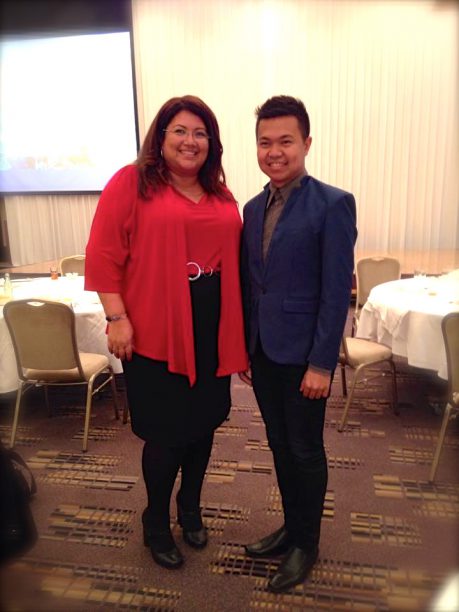
“Information saves lives,” Ramos enthused, a former CNN Global News Correspondent.
In Sendai, homes might have been destroyed, but its people never ceased rebuilding their lives and communities.
The new Yuriage Elementary and Junior High School are likely to be completed in 2018. New seawalls have been constructed to protect the coastal communities against hydro-related hazards. Rehabilitation also takes place in empty lands that may still be used as rice fields, and relocation sites are provided in safe areas.
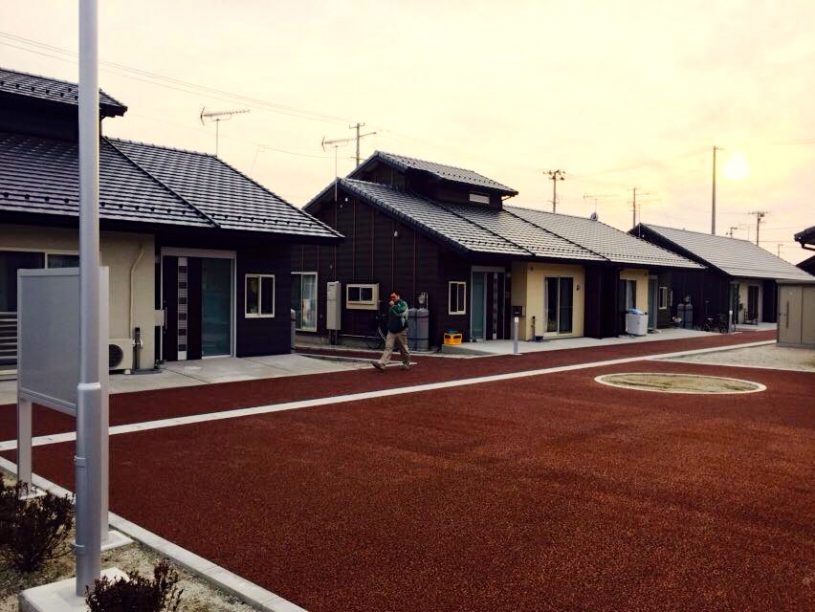
Relocation site in Natori City. Survivors were relocated based on their original neighborhoods.
Meanwhile, Noriko now works as a tour guide in Natori City, sharing the disaster’s aftermath and the lessons they have learned from it. Her stories may be filled with pain, but they are also a reminder of humanity’s great capacity for hope and resilience.
In memory of the 15,891 people who died in the Great East Japan Earthquake.
Sendai, Japan- The Food and Agricultural Organization of the United Nations (FAO) has released a new study stating that 22% of damages from natural disasters, such as floods, droughts and storms, have an impact on agriculture.
This comes from a report from FAO, consisting of 78 post-disaster needs assessments in 48 developing countries spanning the 2003-2013 period.
FAO Director-General José Graziano da Silva emphasized the importance of the agricultural sector, stating that “it encompasses is not only critical for our food supply, it also remains a main source of livelihoods across the planet. While it is a sector at risk, agriculture also can be the foundation upon which we build societies that are more resilient and better equipped to deal with disasters,”
He noted that there is a need to prioritize Disaster Risk Reduction (DRR) in the agriculture sector as studies have shown that for every one dollar spent on DRR, as much as four dollars are returned, in terms of avoided or diminished impacts.
A new facility focusing on how countries can be more resilient before disasters occur was launched by the FAO, which would be focusing on technical training and support for farmers and fisherman from rural communities.
New Technologies Supporting DRR
Having learned lessons from the 2011 earthquake, the BOSAI Industry fair showcased various technologies for DRR. The Japan Bosai Platform is a platform and catalyst for multi-stakeholders to pursue a holistic approach in reducing disaster impacts around the world.
Among the various developments was the use of hybrid cars as energy source during emergencies and disasters. Household appliances such as microwave ovens, lamps and rice cookers can get power from the vehicle.
Model of the Tsunami Evacuation Tower
New structures such as the creation of Tsunami Evacuation Towers were also showcased at the fair.
Vegetable juice as emergency food
Practical Emergency items such as emergency kits and emergency food were also presented at the fair.

Sendai, Japan – While world leaders gathered in Sendai four years after the Great East Asia Earthquake, Category-5 Cyclone Pam hit the South Pacific island nation, Vanuatu. The storm strength was likened to Typhoon Haiyan (Local Name: Yolanda), which devastated provinces in the Visayas, Philippines in 2013. Vanuatu President Baldwin Lonsdale, who was stranded in the conference, asked for help from the international community, and blamed climate change as the cause of these super typhoons.
“This is a major calamity for our country. Every year we lose 6% of our GDP to disasters. This cyclone is a huge setback for the country’s development. It will have severe impacts for all sectors of economic activity including tourism, agriculture and manufacturing. The country is already threatened by coastal erosion and rising sea levels in addition to five active volcanos and earthquakes. This is why I am attending this Conference and why Vanuatu wants to see a strong new framework on disaster risk reduction which will support us in tackling the drivers of disaster risk such as climate change,” President Lonsdale said.
Information Saves Lives
Broadcast journalists also gathered at the ABU (Asia-Pacific Broadcasting Union) Global News Forum hosted by Japan’s largest broadcasting organization, NHK, one of the parallel forums at the conference. Key topics discussed were Preparing for a Mega- Disaster, Better tools, Better Broadcasting- Advances in Emergency Reporting, and Doing it with Digital- Improving Access to Crucial Information.
Mari Ramos, former CNN World Weather Anchor shared how important it was for journalists to study and learn about the weather and climate change issues. “What we don’t know we can’t tell people.” She added, “Inform the viewers, give them the power to make the choices.”
Natalia Ilieva of the ABU presented media’s role in Disaster Risk Reduction, the pro-active media model. She shared that one of the biggest challenges was addressing the quiet time between disasters, which should be used to build safe and resilient society. Media could function as key communicators in creating communication programs before a disaster struck.
Stephanie Hannon, Director of Product Management for Social Impact of the Internet Company, Google, shared the various tools of their company, such as Google Finder and Maps that have helped people in times of disasters. Google also invited media and institutions to use their open platforms. Tomoe Makino, Director of Media of social media company, Twitter, in Japan also discussed how Twitter was used in the country during the 2011 earthquake, citing there were 5,530 tweets per second during that time.
SHARING THE BEST PRACTICES IN THE PHILIPPINES
Representing the Philippines was Civil Defense Administrator USEC Alexander Pama, who showcased Disaster Risk Reduction Management efforts such as hazard mapping and risk assessment among schools and communities. He added that conducting information and education campaigns, hazard drills and simulation exercises also strengthened Disaster Preparedness.
Thanks to social media, more Filipinos had access to real-time information. “Early warning means a less affected population,” Pama said. He proudly reported that Filipinos had learned from Typhoon Yolanda in November 2013. One significant proof was the zero casualties in December 2014 when Typhoon Ruby traversed almost the same path as Yolanda.
PHILIPPINE DELEGATION
The state’s Social Welfare and Development Secretary Dinky Soliman led the Philippine contingents, which comprised of government officials, legislators, and leaders of civil society groups.
The effect of the increasing frequency and intensity of natural hazards was also discussed, especially in developing countries such as the Philippines. They agreed that resilience against disasters was built on, not only a global framework for DRR, but also real prevention of the loss of lives, as well as environmental, social and economic assets.
Other members of the Philippine delegation include Secretary Arsenio Balisacan with Deputy Directors General Margarita Songco and Emmanuel Esguerra of the National Economic and Development Agency (NEDA), Secretary Rogelio Singson and Undersecretary Rafael Yabut of the Department of Public Works and Highways, Environment and Natural Resources Undersecretary Ernesto Adobo, Undersecretary Lesley Cordero of the Office of the Presidential Adviser on Recovery and Rehabilitation, Finance Undersecretary Gil Beltran, National Treasurer Robert Tan and Congressmen Rufus Rodrigues and Mel Senen Sarmiento of the House of Representatives.
Raising Climate Change Adaptation
On behalf of President Benigno Aquino III, United Nations International Strategy for Disaster Reduction Change Adaptation (CCA) for Asia-Pacific, Senator Loren Legarda, delivered the country’s official statement in the world conference.
“The Philippine Statement is a declaration of our commitment to disaster risk reduction. We share with the world how amid our vulnerability, the Philippines has been undertaking serious efforts to building resilience by adhering to the five priority action plans of the Hyogo Framework for Action (HFA). As nations chart a new course for the sustainable and resilient future of a climate change-altered planet, typhoon-battered Philippines will take a proactive role,” said Legarda.
Legarda together with her fellow champions also had a special meeting with United Nations Secretary General Ban Ki-moon inspiring them to lead and initiate awareness on DRR and CCA in their own countries. According to the senator, the DRR champions’ special meeting with the UN Secretary-General could also lead to an annual activity.
FILIPINO EXPERT IN SENDAI
Today, PHIVOLCS Director Renato Solidum will be sharing his expertise at the 2015 International Workshop on Earthquake and Volcanic Hazards and Risks in the Asia Pacific Region, which aims establish an extensive exchange of ideas on seismic and volcanic eruptions that will develop international standards on data compilation and risk assessment. Solidum will be discussing quake and volcanic risk assessment efforts in the Philippines.
Indonesia, China, Taiwan, Italy, New Zealand and Japan will also be presenting, along with United Nations Educational, Scientific and Cultural Organization (UNESCO) and Center for Volcanology and Geological Hazard Mitigation (CVGHM), among others.


















